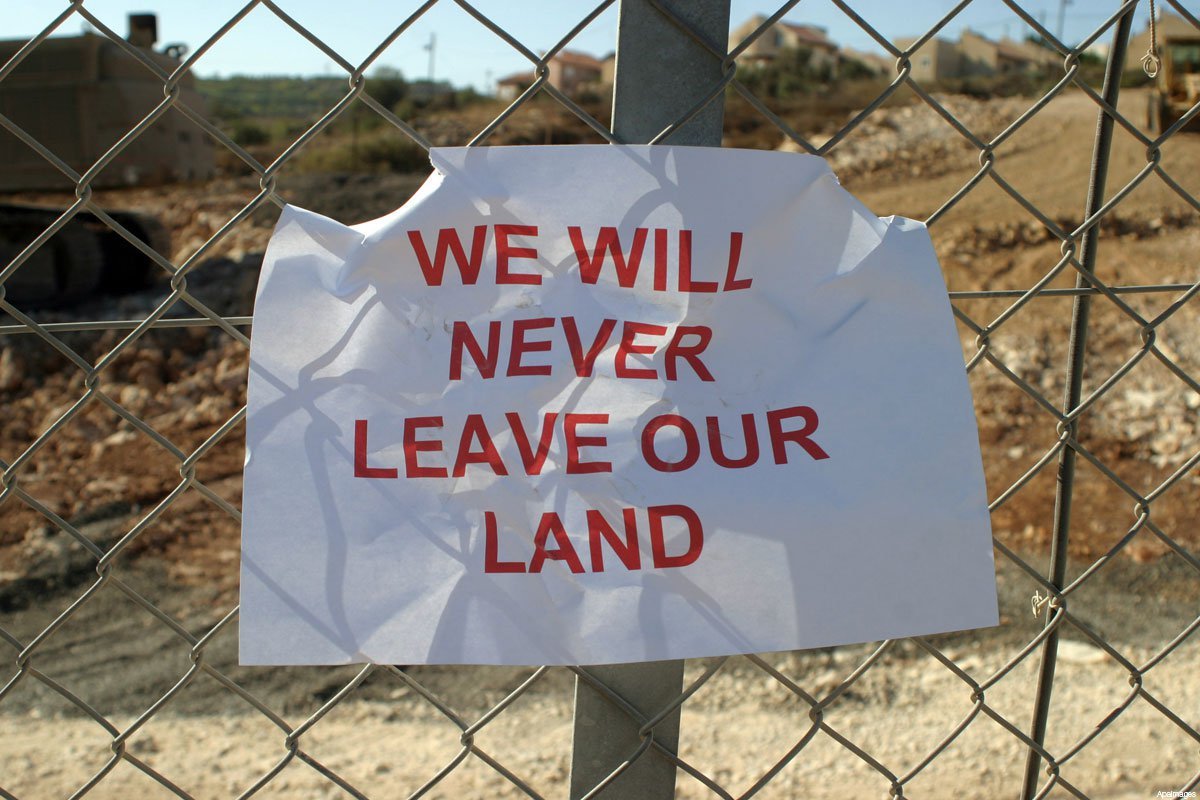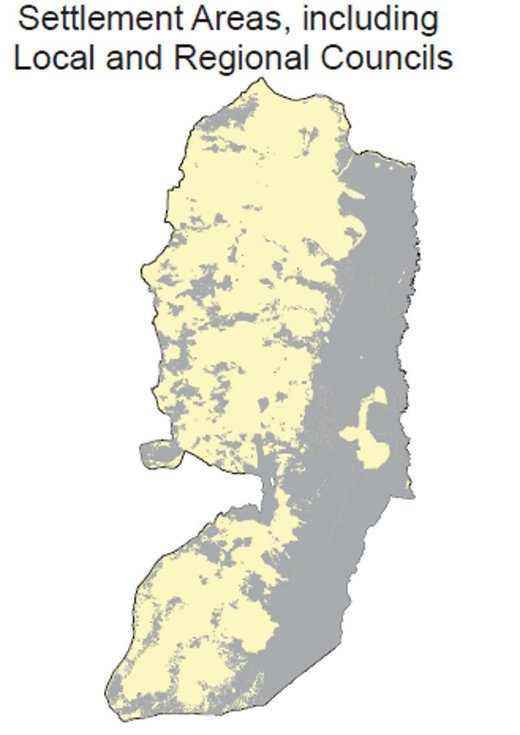
So is this true - and exactly how much of the Occupied Palestinian Territory (OPT) do Israel's settlements take up?

Those who cite the 2 percent figure rarely clarify that this refers purely to the built-up area of the settlements. As described in a Human Rights Watch report earlier this year, while "the built-up area of residential settlements covers 6,000 hectares", there are also "approximately 20 Israeli-administered industrial zones in the West Bank covering about 1,365 hectares, and Israeli settlers oversee the cultivation of 9,300 hectares of agricultural land."
2. The settlements' local authorities.
The 2 percent figure also obscures a perhaps more significant reality. 23 Jewish local authorities operate in the West Bank: "three municipalities, fourteen local councils and six regional councils." According to a 2009 United Nations report, 39 percent of the West Bank falls under these authorities' jurisdiction. Israel has "consistently refused to allocate such land for Palestinian use."
As an example, the report describes how "almost all of the [Jordan Valley and Dead Sea] area falls under the jurisdiction of two [settler] Regional Councils" - the "practical implication" of which "is that, in almost the entirety of the Jordan Valley, Palestinian construction is prohibited."
Israeli NGO B'Tselem, meanwhile, describing how Palestinians are prevented from using land in 'Area C' (around 60 percent of the West Bank), states that settlements and their regional councils constitute 36.6 percent of the West Bank as a whole.
Furthermore, "the areas of jurisdiction of the Jewish local authorities, most of which extend far beyond the built-up area, are defined as 'closed military zones'...[and] Palestinians are forbidden to enter these areas without authorization from the Israeli military commander."
3. A little land goes a long way.
The amount of land taken up by settlements - as well as their accompanying infrastructure - is not just a matter of square hectares; it is possible to colonise key natural resources, and control and fragment occupied territory, by settling a proportionally small amount of land.
As Neve Gordon has explained, when you look at the map, one can "appreciate how even a small percentage of confiscated land can be used to slice the West Bank into several parts." For example, "while the area of jurisdiction of Ma'ale Adumim occupies just 0.8 percent of the West Bank, it nonetheless succeeds in slicing the West Bank into two parts that are almost completely separated."
4. All settlements are illegal under international law.
There is, of course, a fundamental point missed by a debate over percentages. Every single one of the more than 200 Israeli settlements in the OPT - some 'official', others 'unofficial' - are illegal under international law. This is a view shared by, among others, the United Nations (including in both Security Council and General Assembly resolutions), and the International Court of Justice.
The Israeli government itself was given legal advice in 1967 that civilian colonies in the OPT would be a violation of the Fourth Geneva Convention - but proceeded nonetheless. And every single Israeli prime minister since has maintained, consolidated, and expanded, these illegal settlements.
5. Settlements are inherently discriminatory.
Israel's colonies are not just a violation of international law; they are at the heart of a regime of segregation and legalised inequality. In the words of Amnesty International, the settlement policy is "inherently discriminatory" and "perpetuates violations against Palestinians" such as "infringing their rights to adequate housing, water and livelihoods."
This is a daily reality long attested to by Palestinians, as well as by Israeli groups, diplomats, and global human rights NGOs. Thus, regardless of their relative size, or even their future fate in a peace deal, Israel's settlements in the West Bank, today, constitute a grave, systematic violation of international law and human rights. They are part of an apartheid system.




Reader Comments
to our Newsletter